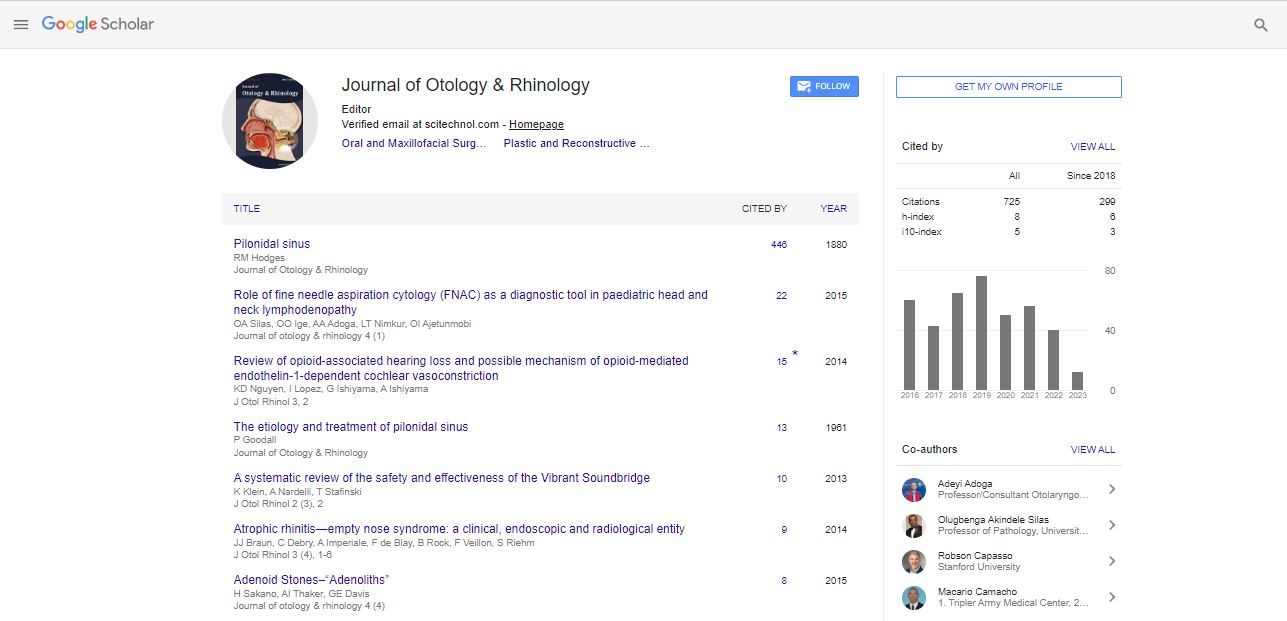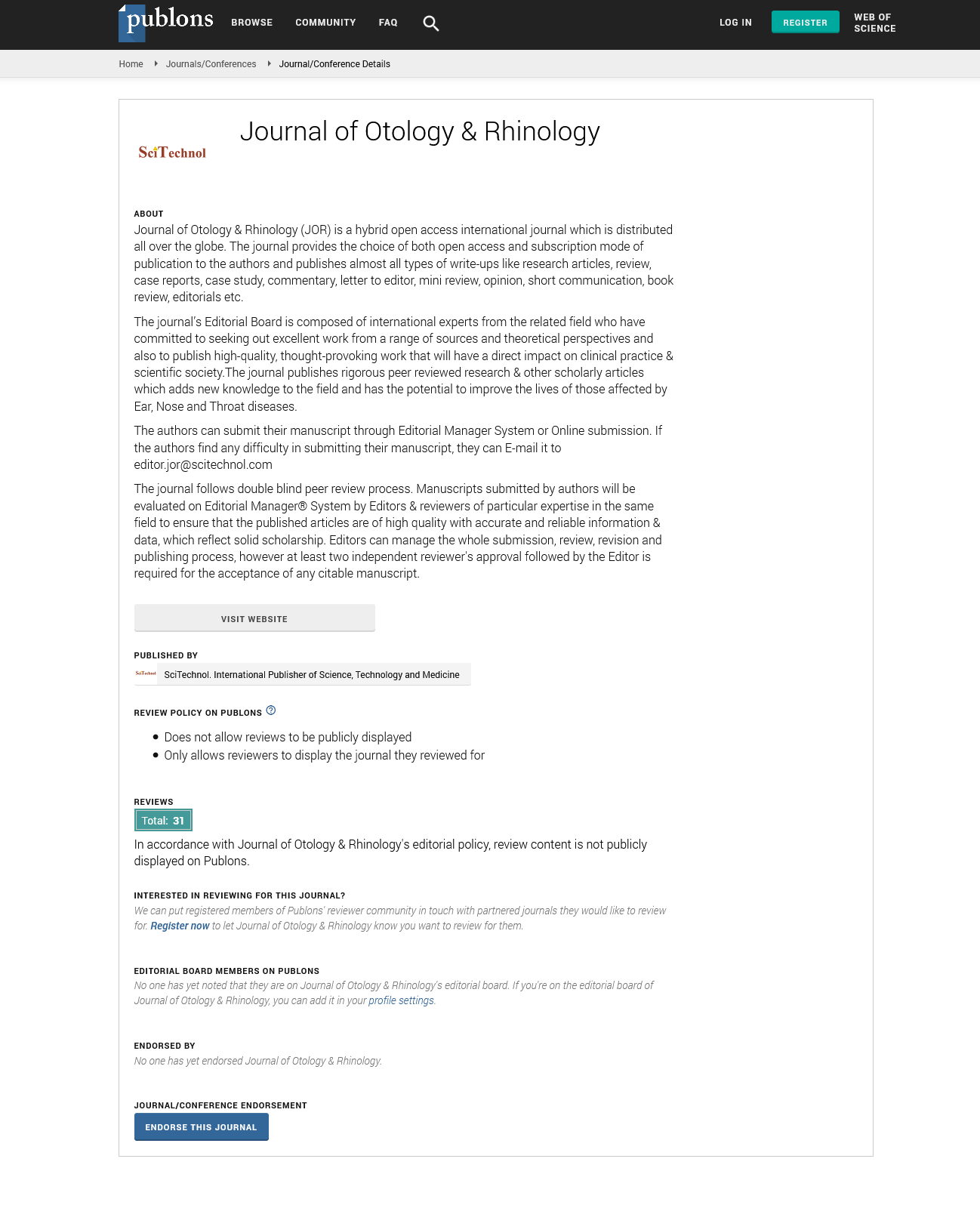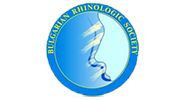Case Report, J Otol Rhinol Vol: 12 Issue: 4
Epistaxis at the Yaounde General Hospital, Cameroon: A study of 95 Cases
Andjock Nkouo Yves Christian1*, Bola Siafa Antoine1, Asmaou Bouba Dalil1, Mindja Eko David1, Dahda Line1, Njock Richard1, Ndjolo Alexis1, Djomou Francois1 and Ngono Ateba Gladys2
1Department of Ophthalmology and Stomatology, University of Yaounde I, Yaounde, Cameroon
2Department of Surgery, University of Yaounde I, Yaounde, Cameroon
*Corresponding Author: Andjock Nkouo Yves Christian
Department of
Ophthalmology and Stomatology,
University of Yaounde I,
Yaounde,
Cameroon,
Tel: + (237) 699845531;
E-mail: andjock_nkouo@hotmail.fr
Received date: 19 April, 2022, Manuscript No. JOR-22-61226; Editor assigned date: 22 April, 2022, PreQC No. JOR-22-61226 (PQ); Reviewed date: 06 May, 2022, QC No. JOR-22-61226; Revised date: 20 June, 2022, Manuscript No. JOR-22-61226 (R); Published date: 27 June, 2022, DOI: 10.4172/2324-8785.100035.
Citation: Christian ANY, Antoine BS, Dalil AB, David MK, Line D, et al. (2022) Epistaxis at the Yaounde General Hospital, Cameroon: A study of 95 Cases. J OtolRhinol 11:7.
Abstract
Background: Epistaxis is a frequent Ear, Nose and Throat (ENT) complaint that patients present to the emergency room or primary care in west countries. This pathology is sometimes linked to patients’ comorbidities (coagulopathies especially). Evolution is often benign. But in some cases, it can be life threatening. Few local data are available.
Objective: The general objective was to study epistaxis at the Yaounde General Hospital (YGH). Specifically: to determine the prevalence of epistaxis at YGH, to bring about the epidemiological, clinical, therapeutic and evolutionary profile of the study sample.
Material and methods: This was a transversal, descriptive and retrospective study. Conducted from January 2016 to December 2020, thus 5 years. During the study period, patients who presented at the ENT service of the YGH with complaints of epistaxis, active or dried up were included. Data analysis was done by version 23.0 of the Statistical Package for the Social Sciences (SPSS).
Results: We included 95 patients. Prevalence of epistaxis was 0.9%. Epidemiologically: Average ages mostly represented were between 10-20 years and 40-50 years respectively with 26.3% at 25.3%. Most patients were males, at 53.3%. Clinical and paraclinical layout: Risk factors were high blood pressure at 15.78 %, smoking at 7.36%, anticoagulant treatment 2.10%. 25.3% of patients presented with active epistaxis, and 74.7% of patients consulted with dried up epistaxis. Epistaxis was unilateral in 69.5% of cases. Epistaxis was anterior in 73.7 % of cases. Epistaxis was of mild abundance in 66.3% of cases, moderate abundance in 28.4% of cases and high abundance in 5.3%. Hemodynamically: 84.2% of patients had a normal blood pressure during consultation. 66.3% of patients had nasofibroscopy. Etiologies were: Fragile Kiesselbach’s plexus at 53.68%, essential causes at 29.47%, trauma at 10.52%, tumoral at 6.31%. 47 patients of the population sample carried out coagulation assessment, thus 49.5%. 22.1% of these patients had abnormal results with a prolonged prothrombin time. Regarding therapeutic and evolution: 22.1% of patients had treatment by chemical cauterization. 51.6% of patients received outpatient care. Evolution was favorable at 94%.
Conclusion: Epistaxis is a non-common patient presenting complaint at YGH, most patients are young adults of male sex. It is mostly unilateral and of mild abundance. Main etiology is a fragile Kiesselbach’s plexus. Treatment is anterior nasal packing, and evolution is favorable in our series.
Keywords: Epistaxis; Prevalence; Yaounde
Introduction
Epistaxis is a frequent Ear, Nose and Throat (ENT) complaint that patients present to the emergency room or primary care in developed countries [1]. This pathology is sometimes linked to patients’ comorbidities (coagulopathies especially). Evolution is often benign. But in some cases, it can be life-threatening. Few local data are available. In our environment where population is younger and presents fewer comorbidities. In order to assess local data with respect to our environment, this study was conducted to contribute to the comprehension and management of this affection.
Objectives
The general objective was to study epistaxis at the Yaounde General Hospital (YGH).
Specifically: 1) to determine the prevalence of epistaxis at YGH, 2) to bring about the epidemiological profile of patients, 3) to establish the clinical profile of patients, 4) to layout the therapeutic and evolutionary profile of the study sample.
Case Presentation
This was a transversal, descriptive and retrospective study. Conducted from January 2016 to December 2020, thus 5 years. During the study period, patients who presented at the ENT service of the YGH with complaints of epistaxis, active or dried up were included. Sampling was consecutive. Patients with incomplete medical reports were excluded. Data was collected on prepared data sheets set for the draft. Data analysis was done by version 23.0 of the Statistical Package for the Social Sciences (SPSS).
Results
We included 95 patients out of 10555 who consulted during study period. Thus, the prevalence of epistaxis was 0.9%.
Epidemiologically: Average ages mostly represented were between 10-20 years and 40-50 years respectively with 26.3% at 25.3%. Most patients were males at 53.3%.
Clinical and paraclinical layout
Table 1 shows patient distribution with respect to epistaxis risk factors.
| Risk factors | N | % |
|---|---|---|
| High blood pressure | 15 | 15.78 |
| Smoking | 7 | 7.36 |
| Anticoagulant treatment | 2 | 2.1 |
| None | 71 | 74.76 |
| Total | 95 | 100 |
Table 1: Distribution of patients with respect to risk factors of epistaxis.
25.3% of patients presented with active epistaxis and 74.7% of patients consulted with dried up epistaxis. Epistaxis was unilateral in 69.5% of cases.
Epistaxis was of mild abundance in 66.3% of cases, moderate abundance in 28.4% of cases and high abundance in 5.3%.
Hemodynamically: 84.2% of patients had a normal blood pressure during consultation.
Table 2 shows distribution of patients with respect to the number of nose bleeding in 24 h.
| Number of nose bleeding in 24h | N | % |
|---|---|---|
| 1 | 54 | 56.8 |
| 2 | 30 | 31.6 |
| 3 | 5 | 5.3 |
| 4 | 1 | 1.1 |
| 5 | 5 | 5.3 |
| Total | 95 | 100 |
Table 2: Distribution of patients with respect to the number of nose bleeding in 24 h.
Table 3 shows the distribution of patients with respect to the etiologies found. 66.3% of patients had nasofibroscopy.
| Etiologies of epistaxis | N | % |
|---|---|---|
| Essential | 28 | 29.47 |
| Trauma | 10 | 10.52 |
| Tumoral | 6 | 6.31 |
| Fragile Kiesselbach’s plexus | 51 | 53.68 |
| Total | 95 | 100 |
Table 3: Distribution of patients with respect to the found etiologies of epistaxis.
47 patients of the population sample went for coagulation assessment, thus 49.5%. 22.1% of these patients had abnormal results with a prolonged prothrombin time.
Regarding therapeutic and evolution: 22.1% of patients had treatment by chemical cauterization. 51.6% of patients received outpatient care. Evolution was favorable at 94%.
Discussion
Epidemiolocal aspects
Prevalence: Prevalence found was 0.9%, Iseh and al in Nigeria found a prevalence of 0.001% [2] and Toure, et al. in Bamako had a prevalence of 0.30% [3]. Valdazo and al in Caen, during 3 years recorded 1450 cases of epistaxis thus 483 cases per year. This low frequency in our series is a particularity. Populations of developed countries have a longer life span and present pathologies necessitating anticoagulant treatments which may explain this difference.
Sex: Masculine predominance found in our series is similar to literature data [4].
Age: In our series, two peaks of distribution were observed, 10-20 years and 40-50 years. Pallin and al found two peaks, patients less than 10 years and more than 70 years [5]. This bimodal distribution was as well found by Shukla and al less than 10 years and more than 40 years [6]. According to Varshney, et al. there is an increase in epistaxis incidence with age [7]. Results that showed the predominance of epistaxis occurrence in aged patients were carried out in west countries, where life span is longer, with more associated conditions.
Clinical aspects
Side and Siege: Epistaxis is unilateral at 69.5% and bilateral at 30.5 % in our series. Djomand, et al. in Ivory Coast had different results with a bilateral localization predominance. This difference may be explained by the fact that this study assessed only severe cases of epistaxis, which are mostly bilateral. This study had similar results to our series with respect to site, with anterior predominance.
Repercussion: In our series, mild abundance epistaxis represented 66.3% of cases, followed by epistaxis of moderate abundance with 28.4% of cases and then epistaxis high abundance with 5.3% of cases. Debrie, et al. in Dakar [8] had similar results.
Etiologies: Epistaxis of essential origin was the principal etiology found. Our results are similar to those found in literature.
Therapeutic aspects
Treatment in our series was mainly by anterior nasal packing. Our results are similar to those found in literature. Evolution was favorable in our series, with observed forms being mostly simple.
Conclusion
Epistaxis is a non-common patient presenting complaint at YGH, most patients are young adults of male sex. It is mostly unilateral and of mild abundance. Main etiology is a fragile Kiesselbach’s plexus. Treatment is anterior nasal packing, and evolution is favorable in our series.
References
- Valdazo A, Loge F, Coutiffioux P, Langeard M (1984) Embolization of the internal maxillary artery in severe essential epistaxis. Ann Otolaryngol Chir Cervicofac 101:205-211.
[Googlescholar] [Indexed]
- Iseh KR, Muhammad Z (2008) Pattern of epistaxis in Sokoto, Nigeria: a review of 72 cases. Ann Afr Med 7:107-111.
- Mohamed AAG, Tounkara A (1998) Minimal assessment in patients suffering from repeated epistaxis in Mali. Black Afr Med 45:405-408.
- Djomand Th (1992) Contribution to the study of epistaxis over a period of 10 years from 1980 to 1989. Medical Thesis 174.
- Shukla PA, Chan N, Duffis EJ, Eloy JA, Prestigiacomo CJ, et al. (2013) Current treatment strategies for epistaxis: a multidisciplinary approach. J NeuroIntervent Surg 5:151-156.
- Pallin DJ, Chng YM, Mckay MP, Emond JA, Pelletier AJ, et al. (2005) Epidemiology of epistaxis in US emergency departments, 1992 to 2001. Ann Emerg Med 46:77-81.
[Googlescholar] [Crossref] [Indexed]
- Varshney S, Saxena RK. Epistaxis: a retrospective clinical study. Indian J Otolaryngol Head Neck Surg 2005; 57:125-129.
- Debrie C, Lavigne F (1980) Assessment of ENT emergencies at the main hospital in Dakar over the past 5 years. Dakar Med 25:28-38.
 Spanish
Spanish  Chinese
Chinese  Russian
Russian  German
German  French
French  Japanese
Japanese  Portuguese
Portuguese  Hindi
Hindi 


